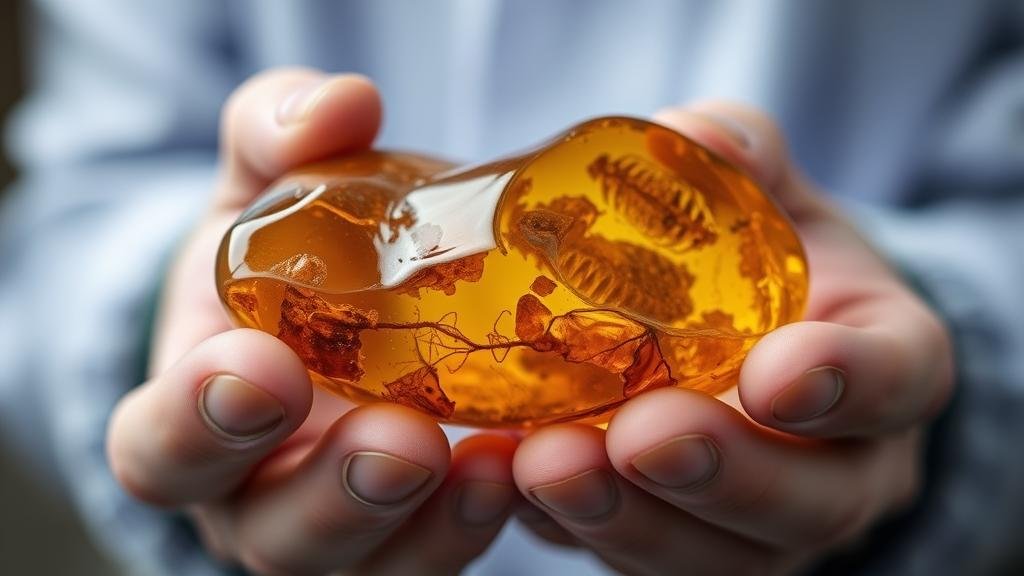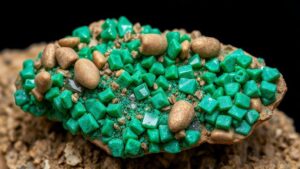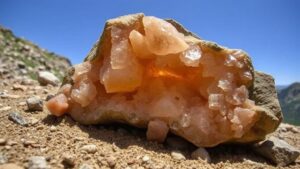Investigating amber deposits in Myanmar, where some of the oldest inclusions are preserved.
Investigating Amber Deposits in Myanmar
Myanmar, formerly known as Burma, is recognized for its rich geological history and significant fossil deposits, particularly amber. This regions amber is notable for containing some of the oldest inclusions, making it a hotspot for rockhounds, paleontologists, and mineral collectors. This article explores the origins, scientific importance, and practical tips for those interested in Myanmar amber.
Origins of Amber in Myanmar
Amber is fossilized tree resin, and the deposits found in Myanmar date back to the Late Cretaceous period, roughly 100 million years ago. This timeframe is remarkable because it allows for a unique glimpse into ancient ecosystems, offering insight into the biodiversity of that era. The primary amber-producing region in Myanmar is known as Kachin State, where extensive deposits can be found, most notably in the Hukawng Valley.
- Geological Age: Late Cretaceous (approximately 100 million years)
- Primary Materials: Fossilized plant resins from ancient coniferous trees
Scientific Significance of Myanmar Amber
The amber deposits in Myanmar are of immense scientific interest due to the inclusions preserved within them. These inclusions range from well-preserved insects and plant fragments to microscopic organisms, providing a detailed snapshot of prehistoric life. Studies have indicated that:
- Over 1,000 species of insects have been identified from these inclusions, some of which are previously unknown to science.
- Myanmar amber has contributed to important paleobiological discoveries, helping scientists understand evolutionary processes and ancient ecosystems.
One of the most significant finds in Myanmar amber was that of a feather attributed to a theropod dinosaur, suggesting that some feathers were present in species long before birds evolved.
Working with Amber: Tips for Rockhounds and Collectors
For rockhounds and mineral collectors, acquiring Myanmar amber requires due diligence and knowledge. Here are actionable tips:
- Research Valid Sources: Ensure that you purchase from reputable dealers or auctions that provide documentation of authenticity. Look for evidence such as provenance and laboratory reports that confirm the age and origin of the amber.
- Examine Inclusions: When evaluating a piece of amber, inspect it for inclusions. Unique features such as trapped insects can significantly enhance its scientific and monetary value.
- Understand the Market: Familiarize yourself with market prices, which can range widely from a few dollars to thousands, depending on the clarity, size, and rarity of the inclusions.
- Care and Maintenance: Store amber away from direct sunlight to prevent it from degrading. Using mineral oil can help maintain its luster.
Real-World Applications and Collecting Opportunities
Collectors of amber from Myanmar can find numerous opportunities for education and practical engagement within the community. Collectors are encouraged to:
- Attend mineral shows and conventions that specialize in fossil and gem specimens, often featuring Myanmar amber.
- Join rockhound clubs and online forums to share experiences, findings, and tips on collecting practices.
These interactions not only enrich personal collections but also help build knowledge regarding the significance of amber in both historical and scientific contexts.
Conclusion
Amber deposits in Myanmar stand as monuments of ancient life, encapsulated for millions of years. For rockhounds and mineral collectors, the allure of exploring these deposits lies not only in their aesthetic beauty but also in their profound scientific value. By understanding the geological history, recognizing the importance of inclusions, and approaching the collecting process with knowledge and care, enthusiasts can build a rich and rewarding collection that connects them to Earths distant past.



